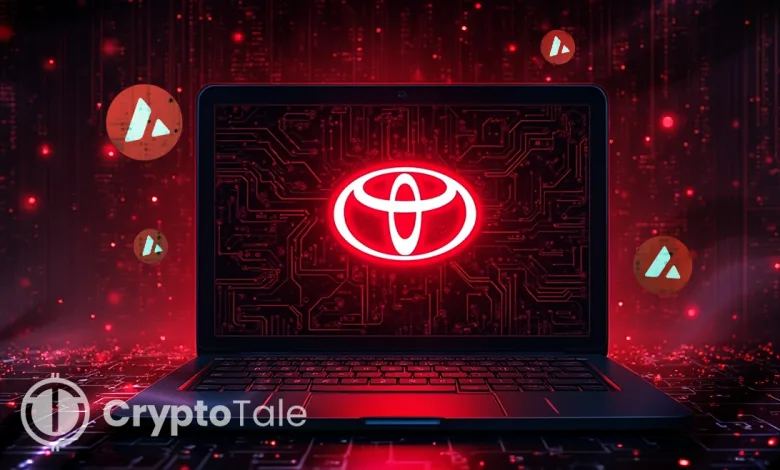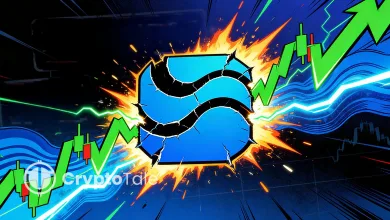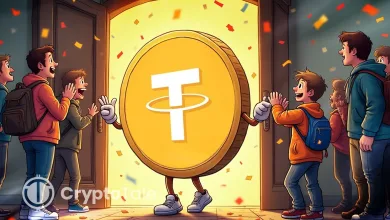Toyota MON Uses Avalanche to Turn Cars Into Digital Assets

- Toyota MON hands over a blockchain record for finance and services for each vehicle.
- Avalanche powers Toyota MON with rapid finality and scalable personalized networks.
- Vehicle NFTs could be traded globally as mobility transforms into digital finance.
Toyota Blockchain Lab has revealed details of its Mobility Orchestration Network (MON) prototype on Avalanche. The project aims to transform vehicles into tradeable, securitized digital assets. Presented in a whitepaper with support from Ava Labs, MON seeks to solve fragmented mobility ecosystems by establishing a trust infrastructure that connects global stakeholders. This enables more transparent yet efficient transactions across vehicle financing, ownership transfers, insurance claims, ride-sharing agreements, and electric vehicle charging payments.
A Blockchain Framework for Mobility
Toyota developed the MON platform to operate as a trust infrastructure. It secures interactions between different transportation participants. The blockchain ensures mobility transactions are verified and coordinated, while also maintaining transparent records of the provision of core services, including financing and carbon credit tracking.
Avalanche was chosen as the base platform due to its high scalability, sub-second finality, and being capable of guaranteeing the existence of many interoperable Layer-1 (L1) chains. Separate from single-chain EVM-compatible systems, Avalanche allows companies to run custom networks configured according to their regulatory or business requirements, keeping them interoperable with the rest of the ecosystem.
As Ava Labs commented, “Every other chain is one lane. Avalanche is the highway.” This comparison illustrates Avalanche’s ability to support large-scale, multi-lane infrastructure for enterprise adoption.
Avalanche already underpins tokenized funds, equities, and more than $6 billion in on-chain loans. Toyota’s MON expands this by applying blockchain to mobility, creating a framework where vehicles easily generate digital footprints showing their entire lifecycle records.
Vehicles as Digital Finance Assets
Under Toyota’s concept, every vehicle—from personal cars to autonomous taxis—generates a unique digital footprint. These records include registration details, service histories, accident reports, mileage, and manufacturing data.
The vehicle information being stored on the decentralized network and represented by an NFT creates the vehicle’s digital identification. This digital identity enables potential buyers, investors, or fleet managers to fully access lifecycle data, thereby reducing the need for intermediate intervention.
The framework of Toyota also charts a scenario under which vehicle NFTs could be traded or purchased without physically possessing the vehicle. This seems to be another take on the concept of mobility as an asset and could change the way transportation and finance interact in global markets.
The MON architecture uses four Avalanche Layer-1 networks: the first one is a Security Token Network for asset issuance, a Mobility Trust Network for ownership and proof management, a Utility Network for services, and a Stablecoin Network for financial transactions. These layers are connected through Avalanche’s Interchain Messaging Protocol.
Building Trust Through Digital Identity
MON introduces the concept of Mobility Oriented Accounts (MOA) to solve this problem, assigning a blockchain-native identity to each vehicle. Such accounts weave together institutional, technical, and economic proofs into an overarching trust package.
On the institutional side, these include the registration of a vehicle and compliance with its insurance. Technical proofs would be based on VIN data and maintenance records. Economic proofs would consider things like usage statistics and performance metrics.
Related: VanEck to Fund Real-Use Web3 Projects on Avalanche Network
But Toyota remains aware of the challenges ahead. Data governance will continue to be essential, particularly in ensuring that it respects privacy and imposes limits on the use and dissemination of personally identifiable information. Legal compliance on internationally known scales and the operational capacity to coordinate between diverse registries, insurers, regulators, and manufacturers also pose a hurdle.
The whitepaper highlights the possibility of a wide range of applications of MON, from financing electric fleets in emerging economies to transparent autonomous taxi systems. It also includes monetized Vehicle-to-Grid (V2G) services and ESG-themed security tokens for green logistics. These use cases aim to reduce due diligence costs and streamline data across global transportation and finance. Can MON successfully transform vehicles into transparent, globally tradable assets while meeting privacy, governance, and regulatory demands?




